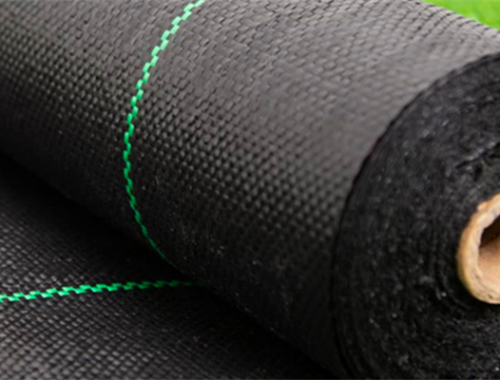Saving BASE Jumping’s Most Famous Party
>
Rose Moeser peers over the edge of West Virginia’s New River Gorge Bridge, watching the morning clouds wisp past her. The thick, white plumes extend down to the bottom of the nearly 1,000-foot ravine. “It seems like we’re standing on top of the clouds,” the 36-year-old says. Neither she, nor any of the other BASE jumpers, can see where they’re going to land after they leave the wooden platform, known as the exit, erected over the railing of the bridge. It’s 8:59 and there’s one minute left before anyone who’s brave enough will start hurling themselves into the abyss. The countdown begins at ten seconds. When it hits zero, the first jumper leaps into the still lingering clouds.
Moeser, a chiropractor from Arizona, is about a dozen people back in the line. As she waits, she practices her form: both arms up and out, then the right one reaches back to grab the parachute. Easy. She learned the technique, at least in part, from her brother, Lee, and her father, Chuck, who are both jumping today, too. Lee, who has been coming here for five years, tumbles off the platform first. Chuck, who has been coming for six years, stands next to Rose. It’s her first time at Bridge Day, so they’re jumping together.
“It’s cleared up,” he reassures her, as the rising sun burns off the remaining fluff, and the line creeps forward. Rose seems nervous, yet poised, as the announcer introduces the father-daughter pair. “Three… two… one…” the Moesers count in unison, running across the platform and exiting on “See ya!” They plummet toward the river, 876 feet below.
This fall marks the 40th anniversary of the construction of the New River Gorge Bridge, which, at the time of its opening, was the second highest in the United States. (It is now the third.) Since shortly after it was built, West Virginians have commemorated the day each October by shutting down the heavily trafficked bridge for six hours and letting BASE jumpers like the Moesers loose.
The annual closure has come to be known as Bridge Day and is among the sport’s longest running and most famous events. “Everybody who’s a BASE jumper knows about Bridge Day,” says Marcus Ellison who, along with fellow volunteer Mark Kisner, organizes the BASE-jumping portion of the day. It’s turned into one of the largest extreme sports events in the world—a festival of sorts that draws as many as 200,000 spectators from around the globe. “The boon to the local economy is enormous,” says Sharon Cruikshank, the chair of the Bridge Day Commission, which oversees festivities that include BASE jumping but also dozens of vendors and entertainers who gather around the bridge. “It’s the largest one-day event in West Virginia.”
But just because Bridge Day has scaled to this size doesn’t mean its survival is guaranteed. Bridge Day has been weathering a midlife crisis of sorts, as security changes and a jumper boycott put the event’s storied reputation in jeopardy.
Burton Ervin is the first person known to have BASE jumped off the New Gorge Bridge; he did it in the dark, at 10:20 P.M. on August 17, 1979, before an impromptu crowd of a couple hundred people. The following year, locals began calling the gathering Bridge Day and five parachuters took the plunge. In 1981, there were ten jumpers. By 1986, there were roughly 400—a level it hovered around for decades. In 1990, West Virginia passed state legislation making Bridge Day official.
The event has only been canceled once, after 9/11, due to worries that the bridge could be a target for terrorism. It quickly bounced back, though. Around the same time, longtime jumper Jason Bell took over as BASE-jumping organizer. During his ensuing 13 years at the helm, the event continued to grow. Bell brought in big name sponsors like Red Bull and Subaru, as well as new launching devices, including a diving board and a human catapult. He also brought in more jumpers to use them—he says the numbers climbed to over 450.
Security issues soon struck Bridge Day again. When the event returned after 9/11, all Bridge Day participants and vendors were required to submit their birth dates and social security numbers for background checks. In 2014, the West Virginia State Police wanted to go a step further: they asked that all jumpers submit to fingerprint scans. The request struck a nerve with the BASE community, which already believes that jumpers are wrongly vilified as scofflaws and hooligans. “[Many] said they wouldn’t return if they had to be fingerprinted like a criminal,” says Bell, who supported the idea of a boycott.“[I think] they needed to sit out a year [so West Virginia could] see what it was like without BASE jumpers.”
Ellison was also skeptical of the scans and background checks. He didn’t think they addressed the problem the police were concerned about: the physical safety of the bridge. But he didn’t agree with a boycott, either. “I have a great deal of respect for Jason. He did a lot for the event over the years,” says Ellison. “[But] I couldn’t sit by and let him destroy the economic stimulus that this community needs.”
The finger scanning split the community. “I basically said I’m done,” says Bell who left as organizer. The next year, in 2015, Ellison and Kisner took over and only about 180 jumpers showed up—less than half of the usual draw. It was a blow that Bridge Day is still trying to recover from. Ellison and Kisner say their main goals are to regain the trust of the jumpers and improve relations with local officials. They believe they are making progress on both fronts.
West Virginia’s police eventually backed off from fingerprint scans and background checks (they didn’t respond to requests for comment on why), and jumpers started to return. Last year there were more than 200. This year there were more than 300. “There are people here who skipped [in protest in past years],” confirmed Ellison, the night before Bridge Day 2017 at the Holiday Lodge hotel near the bridge, which is headquarters for the jumpers. The lobby is overflowing with people packing and repacking parachutes. Some jumpers are even camped outside on the lawn. “We exceeded our expectations,” Ellison says.
At 7:30 A.M. on Bridge Day 2017, the shuttles start running between the Holiday Lodge to the bridge. With the sun only starting to make an appearance, the jumpers mill around in semidarkness.
Some of the biggest names in BASE jumping are here, like Sean Chuma, Katie Hansen, and Johnny Utah. But when Bell left as organizer, so did Red Bull, Subaru, and other sponsors. There are a few smaller ones left, like the skydiving and BASE jumping equipment company Squirrel, and the West Virginia state lottery. The absence of a corporate presence doesn’t, however, seem to bother the new organizers. In fact, they say they welcome the change. “It had become more commercial,” says Ellison. (Bell disagrees.) “We’re bringing the event back to the jumpers; that’s what it was originally for.”
Ellison is particularly excited about the 50 or so newcomers this year. “Bridge Day is a place to come and learn to BASE jump,” he says. He explains that while broken bones are not uncommon (and three people have died, although none in the past decade), the New River Gorge is considered a safe place to jump, because the height allows more time to correct mistakes and the water (boats pull the jumpers out) provides a soft landing. “The story of Bridge Day is about the little guy,” he says.
Moeser is one of these newcomers. She is an experienced skydiver, but decided to try BASE jumping after her father and brother fell for the sport.“My dad, my brother, and my husband all did their first jump here,” she says. “I’m so happy the day has come.” Moeser made sure she was on the first shuttle from the hotel.
By 9 A.M. the line of jumpers stretches hundreds of feet down the bridge. Each person will probably get about three jumps in before Bridge Day ends at 3 P.M., four if they’re lucky. When they get to the front, they’ll have to choose how to make their exit. The default is the platform; it’s steady and reliable. A diving board is another option. New this year is a scissor lift, which hoists jumpers an extra 40-some feet off the deck of the bridge, and gives the crowd a better view. The most exciting exit, however, is the human catapult, which is back after a two-year absence. The hydraulic launcher has a seat on one end and is painted a Rastafarian green and yellow, with “the Human Rastapult” written on the side. The unofficial slogan: “We get you higher.”
Moeser and her dad run off the platform. Less than two seconds later, she pulls her parachute and floats to the landing zone, just missing the river.
As the sun moves higher, spectators flood in. After passing security checkpoints (visitors still have to go through this) and vendor tents, they stroll across the bridge to the main attraction. “BASE jumping brings the excitement to the event,” says Cruikshank, from the Bridge Day Commission. Over her shoulder, onlookers ooh and ahh with each leap. There’s over a hundred per hour.
The security controversy and the ensuing leadership change is still a touchy subject at Bridge Day. Cruikshank sidesteps the topic when asked about it, and most jumpers decline to comment. They prefer to look forward to other goals, like making BASE jumping more accepted in the U.S. “[It] should be completely legal off any object, any day of the year,” Lee Moeser says defiantly. “I'm optimistic that we can one day have more open access,” says Johnny Utah. “It would be a major milestone.”
For now, though, BASE jumping from the New River Gorge Bridge is still only legal between 9 A.M. and 3 P.M. on the third Saturday of October. And it’s a constant stream of jumpers right up until the cutoff. The day finishes with a group jump, known as a big way, to celebrate the 40th anniversary. Nine people jump in succession, including Lee and Chuck Moeser. Rose watches from below. After everyone lands, the family packs up and heads back to the Holiday Lodge for the infamous after-party. It’s a tradition that, like the bridge itself, everyone hopes will endure for another four decades.
“It’s people jumping off a bridge,” says Kisner. “How much is that going to change?”
You May Also Like

AI in Fashion: How Artificial Intelligence is Redefining Design, Production, and Shopping Experiences
February 28, 2025
Automatic Weather Station: An Overview of Its Functionality and Applications
March 14, 2025